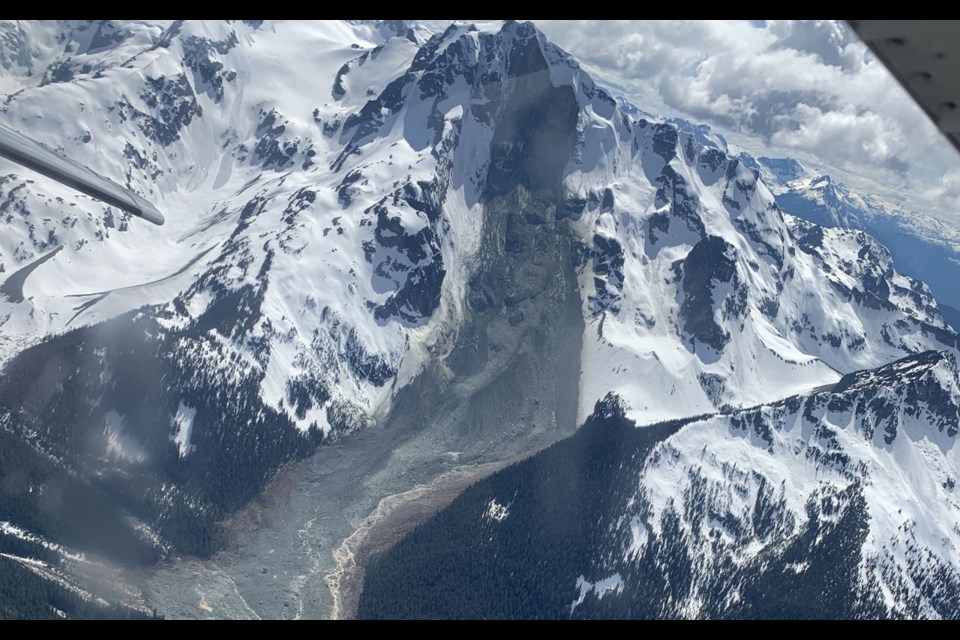Of course we all want snow, and even rain, to fall as we think of enjoying our mountain pursuits.
After all, carving our way down the slopes brings a certain feeling of freedom that really can't be found in any other activity.
But as we slip over the snow, let's spare a thought for what is under our skis and boards. Snow is much more than just the source of great recreational activities and indeed whole industries; it is a fundamental source of water.
Recently, we learned from the Whistler Naturalists that our two glaciers are continuing to recede, though unevenly, thanks to myriad reasons ("Glacier monitoring update shows Wedgemount continues to recede," Pique, Nov. 17, 2019).
These melting glaciers are stark reminders of the climate crisis we are facing. We can see and measure the change in a way that can't be ignored. Wedgemont has been measured across 46 years, starting in 1965, and since then has receded 585 metres. Overlord's monitoring began in 1986 and the last time it was assessed in 2017, it had receded 264 m.
Glaciers are an important source of water during melt times, creating hydro power, irrigation to lowland farms and gardens, as well as providing water to wildlife and local streams and rivers. They are in many ways the perfect storage mechanism, capturing water in times of plenty and releasing it when the weather is hotter and drier and the need greater.
They seem so majestic and huge at a global level it is hard to imagine they too are a threatened entity, and that their demise globally threatens the lives of 1.9 billion people.
This hard fact was brought home in an even more concrete way this week with a report published in the journal Nature titled: "The importance and vulnerability of the world's water towers."
A group of 32 international scientists, including a professor at the University of B.C. (UBC) wrote the report to highlight the importance and vulnerabilities of what they call Earth's 78 water towers.
The authors concluded that it's essential to develop international, mountain-specific conservation and revamp climate-change policies and strategies to protect ecosystems and people downstream from glaciers.
The world's most relied-upon mountain system—and also one of the most vulnerable, according to the report—is the Indus water tower in Asia, made up of vast areas of the Himalayan mountain range and covering portions of Afghanistan, China, India and Pakistan.
Other high-ranking water tower systems are the southern Andes, in Latin America; the Rocky Mountains, in North America; and the European Alps.
Researchers investigated how important the water from the glaciers was to those living at the base of the mountains.
"It was more about really reinforcing that the conversation needs to move beyond the changes that are happening to the cryosphere [frozen water on Earth] and what are those downstream impacts of these changes to people," UBC geography professor Michele Koppes, who was part of the study, told CBC on Dec.8.
She said as populations grow and climate change affects these water towers, other associated events such as floods, landslides and water turbidity will occur. Koppes pointed to a pair of massive landslides that decimated the northeast slope of Joffre Peak, resulting in the closure last May of the Nlháxten/Cerise Creek Conservancy, located north of Pemberton as examples.
She also said there will be less water in the summer and that has implications for how we use water to make electricity.
And what will be the long-term impact on snowmaking, more and more the saviour of ski resorts facing low precipitation levels in the early ski/board season?
"There [are] all these cascading impacts," said Koppes.
"It's really important to understand that we're vulnerable to these changes."
You may recall that in 1992, countries around the world adopted the United Nations Framework Convention on Climate Change (UNFCCC), the first near-universal international agreement to tackle global climate change. The objective of the treaty was to reduce greenhouse-gas emissions and prevent the dangerous effects of climate change. Every year since 1995, the Convention of the Parties, or COP, is held to make progress towards this objective.
This week, COP 25 took place in Madrid and part of that was the presentation of Blue COP, which is focused on the world's most important carbon sponge—the oceans. Healthy oceans absorb carbon and provide a buffer against climate chaos, so damage to them is damage to the climate, and vice versa.
This all goes to remind us that water, whether fresh or salt, solid or liquid, is foundational to our existence.
So, as we do the Ullr snow dance and enjoy that glass of fresh, cold water take a moment to consider how to honour this precious resource.




